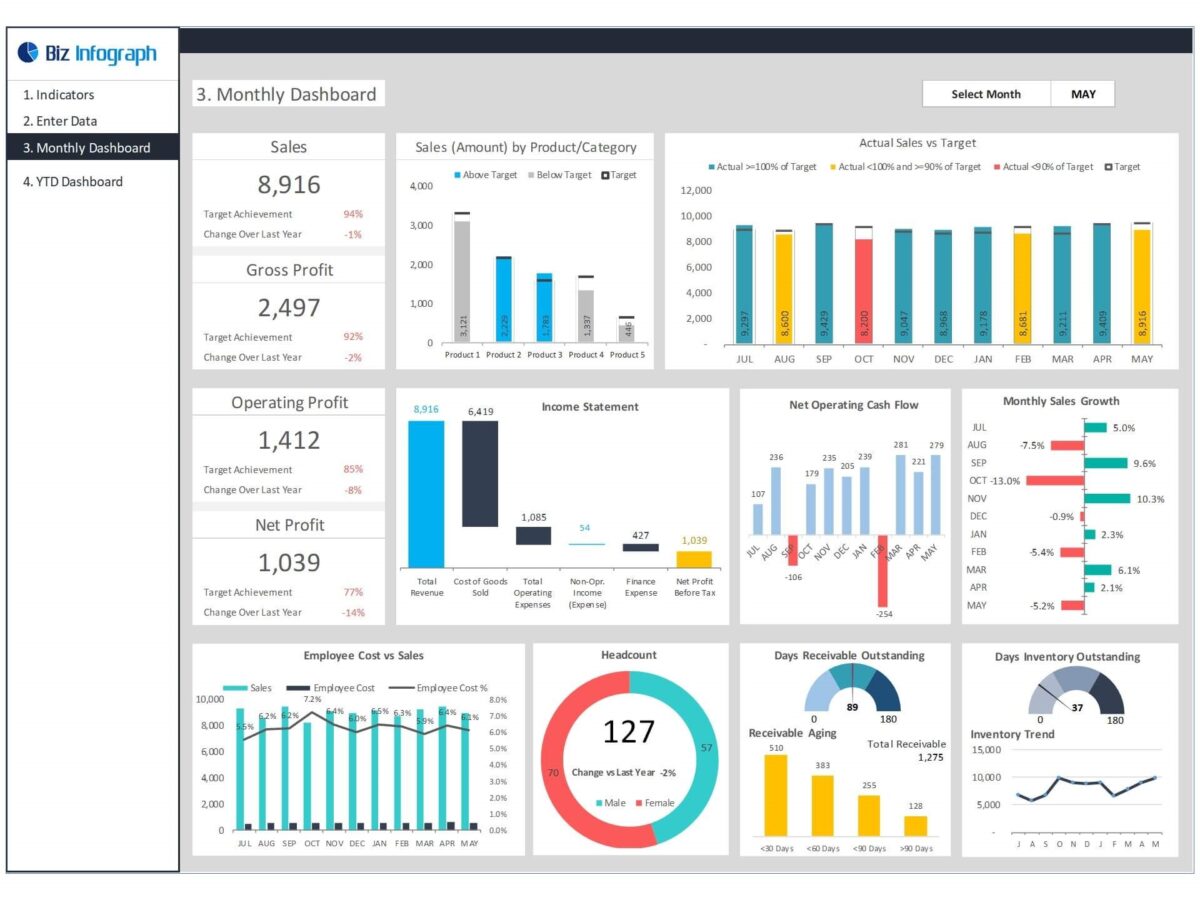Financial management and analysis are some of the most important functions of any business. So, for financial professionals, it’s necessary to know how to analyze the financial position of the company. There are different financial dashboards that help with these functions but it’s still important for professionals to understand some key areas.
There are three areas that are divided into subcategories required to properly analyze the company’s financial position. These areas include understanding financial statements, the company’s industry, and the different strategies the company uses. These are further divided into more steps to help you with financial analysis.
Step 1: Identify the industries’ performance
One of the very first steps you should take is to determine the performance of the industry, which can be done through a value chain analysis. This will help you determine how much value your competitors have. Furthermore, you can also combine the analysis with Porter’s Five Forces to get a reliable result.
Step 2: Identify Your Strategies
Once you’ve done the analysis for the industry, shift your focus towards your company and determine what kind of products and services you’re providing, how unique they are from your competitors, your profit margins, and also how you’re influencing your brand. Additionally, you should also consider the geographic diversification of your company.
Step 3: Review Financial Statements
This is where it starts getting technical. You should start by reviewing financial statements and identifying issues in your balance sheet that can create issues with evaluation. Every financial statement should represent the correct data so for example if you’re looking at an income statement, then it should represent all earnings. Whereas, if you’re reviewing the cash flow statement, it should represent everything related to cash entering and leaving your business.
Step 4: Analyze the Financial Statements
The easiest way to analyze financial statements is through the ratio analysis of the data. These ratio analyses will help you understand asset management, profitability, debt management, liquidity, etc. Once you’ve compiled all the data from ratio analysis, start comparing them to previous quarterly or annual analyses for comparison.
Step 5: Value your Company
Once you have all the results from the financial ratio analysis, you can easily start comparing them with the performances of other companies in your industry. There also are other ways you can value your firm that include discounted cash flow method, economic value-added, and relative valuation.
You can simplify and automate this whole process of valuation of the firm’s financial positioning with business dashboards. We offer a variety of financial dashboard templates to companies that can easily track and record their financial data while also doing any ratio analysis without issues.
We even offer HR dashboards and sales management dashboards so companies can improve all their business functions. So, if you’re interested—contact us to see how our dashboards can make your life easier.
